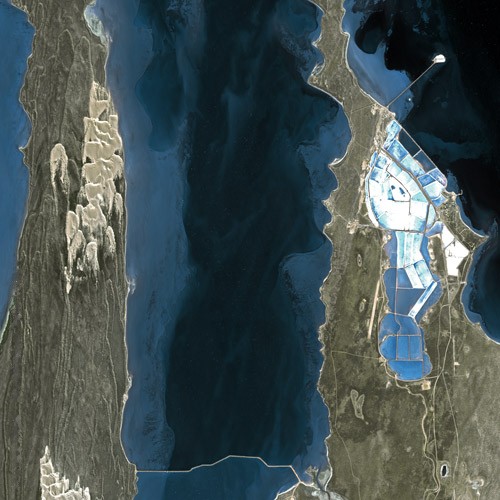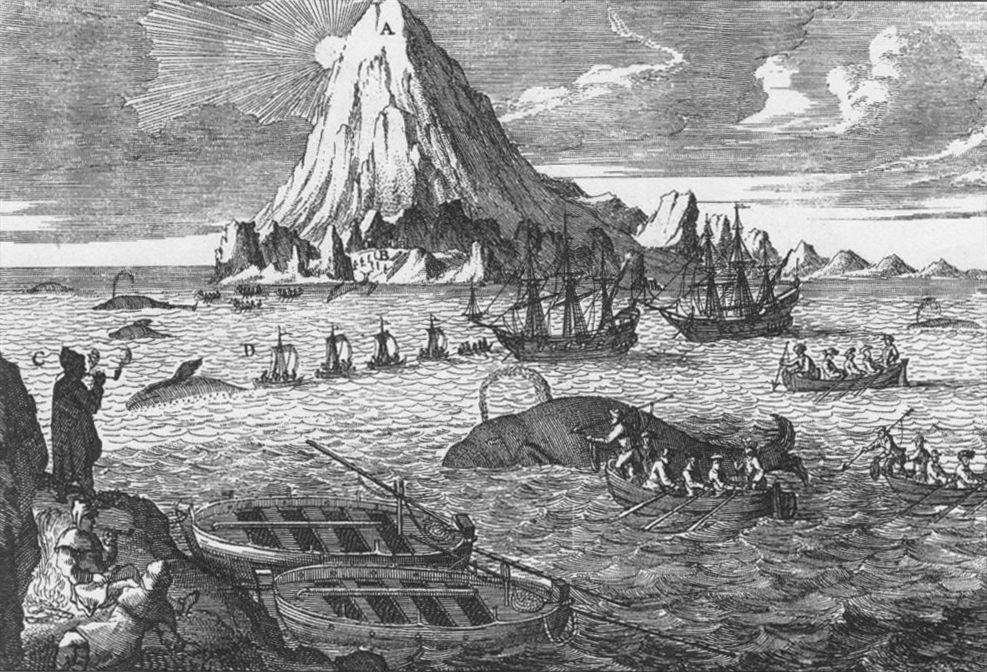|
Shark Bay
Shark Bay () is a World Heritage Site in the Gascoyne region of Western Australia. The area is located approximately north of Perth, on the westernmost point of the Australian continent. UNESCO's listing of Shark Bay as a World Heritage Site reads: The bay features Australia's most abundant marine ecosystems. It is a popular fishing spot. History The record of Indigenous Australians, Australian Aboriginal occupation of Shark Bay extends to years Before Present, BP. At that time most of the area was dry land, and rising sea levels flooded Shark Bay between BP and BP. A considerable number of Aboriginal midden sites have been found, especially on Peron Peninsula and Dirk Hartog Island, which provide evidence of some of the foods gathered from the waters and nearby land areas. An expedition led by Dirk Hartog happened upon the area in 1616, becoming the second group of Europeans known to have visited Australia, after the crew of ''Duyfken'' under Willem Janszoon had visi ... [...More Info...] [...Related Items...] OR: [Wikipedia] [Google] [Baidu] |
Gascoyne
The Gascoyne region is one of the nine regions of Western Australia. It is located in the northwest of Western Australia, and consists of the local government areas of Carnarvon, Exmouth, Shark Bay and Upper Gascoyne. The Gascoyne has about of Indian Ocean coastline; extends inland about ; and has an area of , Estimated resident population, 30 June 2019. including islands. Population The Gascoyne has the lowest population of any region of Western Australia, with about 9,277 people. The majority of residents are non-Aboriginal people born in Australia (74%). Just over half live in Carnarvon (4,426) where Aboriginal residents account for 18% of the population. Other centres are Exmouth, Denham, Gascoyne Junction and Coral Bay. Climate The Gascoyne has a moderate arid tropical, climate. It is generally warm all year round, with mean maximum daily temperatures ranging from in July to in January. The region receives about 320 days of sunshine per year. Annual rainfall is low a ... [...More Info...] [...Related Items...] OR: [Wikipedia] [Google] [Baidu] |
Dirk Hartog
Dirk Hartog (; baptised 30 October 1580 – buried 11 October 1621) was a 17th-century Dutch sailor and explorer. Dirk Hartog's expedition was the second European group to land in Australia and the first to leave behind an artifact to record his visit, the Hartog Plate. His name is sometimes alternatively spelled Dirck Hartog or Dierick Hartochsz. Ernest Giles referred to him as Theodoric Hartog. The Western Australian island Dirk Hartog Island is named after Hartog. Life Born into a seafaring family, he received his first ship's command at the age of 30 and spent several years engaged in successful trading ventures in the Baltic and Mediterranean seas. In 1616, Hartog gained employment with the Dutch East India Company (, commonly abbreviated to VOC), and was appointed master of the (meaning "Concord" or "Unity"), in a fleet voyaging from the Netherlands to the Dutch East Indies. Hartog set sail in January 1616 in the company of several other VOC ships, but became separa ... [...More Info...] [...Related Items...] OR: [Wikipedia] [Google] [Baidu] |
Factory Ship
A factory ship, also known as a fish processing vessel, is a large ocean-going vessel with extensive on-board facilities for processing and freezing caught fish or whales. Modern factory ships are automated and enlarged versions of the earlier whalers, and their use for fishing has grown dramatically. Some factory ships are equipped to serve as a mother ship. Background Contemporary factory ships have their origins in the early whalers. These vessels sailed into remote waters and processed the whale oil on board, discarding the carcass. Later whalers converted the entire whale into usable products. The efficiency of these ships and the predation they carried out on whales contributed greatly to the animals' steep decline. Contemporary factory ships are automated and enlarged versions of these earlier whalers. Their use for fishing has grown dramatically. For a while, Russia, Japan and Korea operated huge fishing fleets centred on factory ships, though in recent times this ... [...More Info...] [...Related Items...] OR: [Wikipedia] [Google] [Baidu] |
Norway
Norway, officially the Kingdom of Norway, is a Nordic countries, Nordic country located on the Scandinavian Peninsula in Northern Europe. The remote Arctic island of Jan Mayen and the archipelago of Svalbard also form part of the Kingdom of Norway. Bouvet Island, located in the Subantarctic, is a Dependencies of Norway, dependency, and not a part of the Kingdom; Norway also Territorial claims in Antarctica, claims the Antarctic territories of Peter I Island and Queen Maud Land. Norway has a population of 5.6 million. Its capital and largest city is Oslo. The country has a total area of . The country shares a long eastern border with Sweden, and is bordered by Finland and Russia to the northeast. Norway has an extensive coastline facing the Skagerrak strait, the North Atlantic Ocean, and the Barents Sea. The unified kingdom of Norway was established in 872 as a merger of Petty kingdoms of Norway, petty kingdoms and has existed continuously for years. From 1537 to 1814, Norway ... [...More Info...] [...Related Items...] OR: [Wikipedia] [Google] [Baidu] |
Whaling
Whaling is the hunting of whales for their products such as meat and blubber, which can be turned into a type of oil that was important in the Industrial Revolution. Whaling was practiced as an organized industry as early as 875 AD. By the 16th century, it had become the principal industry in the Basque coastal regions of Spain and France. The whaling industry spread throughout the world and became very profitable in terms of trade and resources. Some regions of the world's oceans, along the animals' migration routes, had a particularly dense whale population and became targets for large concentrations of whaling ships, and the industry continued to grow well into the 20th century. The depletion of some whale species to near extinction led to the banning of whaling in many countries by 1969 and to an international cessation of whaling as an industry in the late 1980s. Archaeological evidence suggests the earliest known forms of whaling date to at least 3000 BC, practiced by the ... [...More Info...] [...Related Items...] OR: [Wikipedia] [Google] [Baidu] |
Pearl Hunting
Pearl hunting, also known as pearl fishing or pearling, is the activity of recovering or attempting to recover pearls from wild molluscs, usually oysters or mussels, in the sea or freshwater. Pearl hunting was prevalent in India and Japan for thousands of years. On the northern and north-western coast of Western Australia pearl diving began in the 1850s, and started in the Torres Strait Islands in the 1860s, where the term also covers diving for nacre or mother of pearl found in what were known as pearl shells. In most cases the pearl-bearing molluscs live at depths where they are not manually accessible from the surface, and diving or the use of some form of tool is needed to reach them. Historically the molluscs were retrieved by freediving, a technique where the diver descends to the bottom, collects what they can, and surfaces on a single breath. The diving mask improved the ability of the diver to see while underwater. When the surface-supplied diving helmet became availabl ... [...More Info...] [...Related Items...] OR: [Wikipedia] [Google] [Baidu] |
Louis De Freycinet
Louis Claude de Saulces de Freycinet (7 August 1779 – 18 August 1841) was a French Navy officer. He circumnavigated the Earth, and in 1811 published the first map to show a full outline of the coastline of Australia. Biography He was born at Montélimar, Drôme. Louis-Claude de Saulces de Freycinet was his full name (many calling him Louis de Freycinet). His mother was Élisabeth-Antoinette-Catherine Armand. He had three brothers, Louis-Henri de Saulces de Freycinet, André-Charles de Saulces de Freycinet and the youngest, Frédéric-Casimir de Saulces de Freycinet (father of Charles de Freycinet). Louis-Claude was the second oldest. In 1793 he joined the French Navy as a midshipman, and took in several engagements against the British. In 1800, Freycinet was appointed to an exploration expedition to Southern and South-Western coasts of Australia under Nicolas Baudin, on ''Naturaliste'' and ''Géographe''. Freycinet's brother, Louis-Henri de Freycinet, was also part of the ... [...More Info...] [...Related Items...] OR: [Wikipedia] [Google] [Baidu] |
Nicolas Baudin
Nicolas Thomas Baudin (; 17 February 175416 September 1803) was a French explorer, cartographer, naturalist and hydrographer, most notable for his explorations in Australia and the southern Pacific. He carried a few corms of Gros Michel banana from Southeast Asia, depositing them at a botanical garden on the Caribbean island of Martinique. Biography Early career Born a commoner in Saint-Martin-de-Ré on the Île de Ré on 17 February 1754, Nicolas Baudin joined the merchant navy as an apprentice () at the age of 15; he was then "of average height with brown hair". He then joined the French East India Company at the age of 20 on ''Flamand''. He returned from India on ''L'Étoile'' and arrived at Lorient. At the beginning of 1778, he was to set sail from Nantes on ''Lion'' as second lieutenant. It was a ship equipped by his uncle, Jean Peltier Dudoyer, at the request of the Americans, which would become a privateer and be renamed ''Deane''. At first the Minister for the N ... [...More Info...] [...Related Items...] OR: [Wikipedia] [Google] [Baidu] |
Louis Aleno De St Aloüarn
Louis may refer to: People * Louis (given name), origin and several individuals with this name * Louis (surname) * Louis (singer), Serbian singer Other uses * Louis (coin), a French coin * HMS ''Louis'', two ships of the Royal Navy See also * Derived terms * King Louis (other) * Saint Louis (other) * Louis Cruise Lines * Louis dressing, for salad * Louis Quinze, design style Associated terms * Lewis (other) * Louie (other) * Luis (other) * Louise (other) * Louisville (other) Associated names * * Chlodwig, the origin of the name Ludwig, which is translated to English as "Louis" * Ladislav and László - names sometimes erroneously associated with "Louis" * Ludovic, Ludwig, Ludwick, Ludwik Ludwik () is a Polish given name. Notable people with the name include: * Ludwik Czyżewski, Polish WWII general * Ludwik Fleck (1896–1961), Polish medical doctor and biologist * Ludwik Gintel (1899–1973), Polish- ... [...More Info...] [...Related Items...] OR: [Wikipedia] [Google] [Baidu] |
George Nicol (bookseller)
George Nicol (1740? – 25 June 1828) was a bookseller and publisher in 18th-century London. In 1781, he became bookseller to George III, a position he held until 1820. In 1785, he published an improved edition of James Cook, James Cook's third voyage. In 1786, he became involved with John Boydell, John Boydell's Boydell Shakespeare Gallery, Shakespeare Gallery and bore responsibility for the letterpress. He and the others in the project wanted to create a type that would be both utilitarian and beautiful. Early life and work Nicol was born in Liberton, Midlothian, Scotland, in May 1741).Painting.Maxted. Around 1769, he moved to London and began working for his uncle, David Wilson at his shop in the Strand, London, Strand.Burke, 243. Later, the two men became partners. By spring 1773, Nicol had already become sufficiently successful to receive the king's informal commission to purchase books on his behalf. At the sale of the library of James West (antiquary), James West, presi ... [...More Info...] [...Related Items...] OR: [Wikipedia] [Google] [Baidu] |





